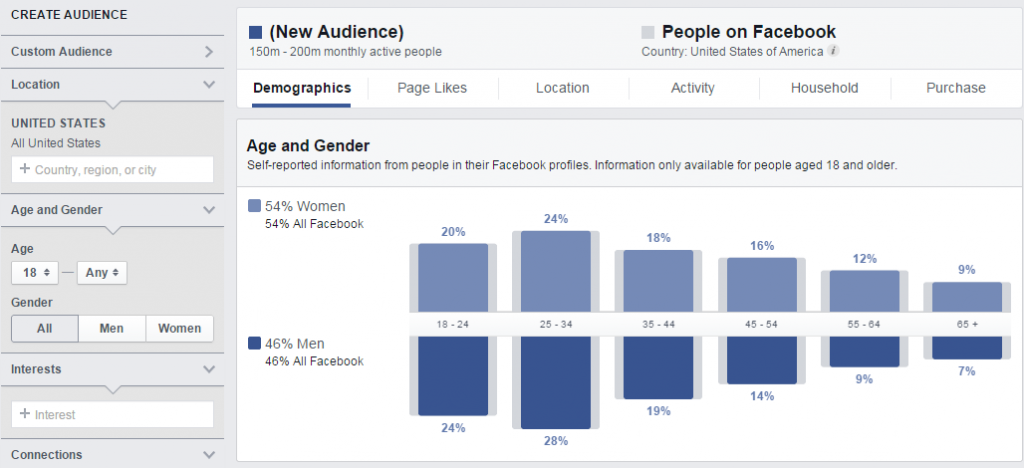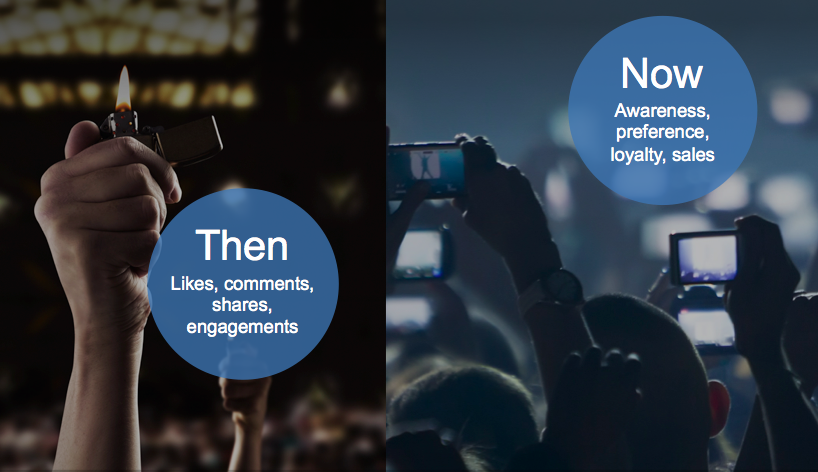Wonk Wednesday: Diving Into Facebook Audience Insights
 Warning! If you’re using Facebook as a brand manager, but your brand page is set up as a friend page with a name like First Name “My” and Last Name “Company”, this information will not match up with your dashboard capabilities (but this link will help you tremendously). If you are a brand manager on the platform, and you have a good understanding of how to reach your audience AND you want to learn more about your audience interaction… then buckle up! Today on Wonk Wednesday, we are taking a trip through Facebook Audience Insights.
Warning! If you’re using Facebook as a brand manager, but your brand page is set up as a friend page with a name like First Name “My” and Last Name “Company”, this information will not match up with your dashboard capabilities (but this link will help you tremendously). If you are a brand manager on the platform, and you have a good understanding of how to reach your audience AND you want to learn more about your audience interaction… then buckle up! Today on Wonk Wednesday, we are taking a trip through Facebook Audience Insights.

Facebook Audience Insights is a fantastic tool that allows you to see how Facebook looks at audience segments. It’s comprehensive but it doesn’t burden you with a myriad of options and data paths. It also doesn’t take much time to become familiar with the tool. Very quickly you can find exactly what you’re looking for, to improve your page and your audience quality.
To find Audience Insights, you’ll need to navigate over to the Facebook Ads Manager (← use that link and click on Manage Your Ads). Even if you’ve never created an ad, you’ll be able to access. It’s located on the left menu, highlighted here. Now that we know where it is, let’s move on to three key takeaways for this tool!
1. What can Audience Insights tell you?
More than Facebook Page Insights, Audience Insights is about identifying trends with an audience and turning potential customers into purchasing customers. Outcome over output. Through this tool, you can look at a breadth of information like age, education, relationship status, job role, what their top Facebook pages are, where they live, how often they log in to Facebook (and what device they use to log in), and purchase history (if they bought online or in-store).
This tool really offers you insight (ha – see what we did there) with how much information Facebook collects – outside of its platform. Fun fact: Facebook partners with companies like Acxiom that share behaviors while keeping customer information anonymous.
2. What is Audience Insights used for?
Audience Insights allows you to create your own target audience from data you’ve collected through an eNewsletter or a Facebook Pixel tracker. It also allows you to build a custom audience in the same way you would build a target audience in Facebook Ads. Looking to focus on users with a life event such as “Engaged” for your catering business? Create an audience targeting that relationship status and pair it with your geo-targeting. Looking to market your new messaging app? Target users with a life event of “Long Distance Relationship.” The options are nearly endless, and can be as focused or as broad as you would like them to be. Once you’ve created your audience, you can reuse it as often as necessary or make a few changes to get the engagement you’re really looking for.
3. How will it evolve in the future?
Facebook is shifting away from the importance of Likes, Shares and Comments. They want the user experience to focus more on awareness, loyalty and sales. Again – outcome v. output. Creating a specific target audience is important to Facebook so users have a more impactful experience on their news feeds. This may be why Facebook engagement is becoming more and more limited through their algorithm, and why some pages continue to reach less than 1% of their total audience on any given post. Knowing we’re going to reach such a small portion of that group, brand managers have to be thoughtful of every single posting opportunity as a way to enhance their relationship with the person on the other end of the click. Audience Insights gives us more information than ever to make that experience something special, rather than something mundane.
So that’s it for Wonk Wednesday! Facebook can overwhelm anyone, but by diving into its pieces and parts – it’s a little easier to manage.
Thomas Broadus
Director of Interactive and New Media


